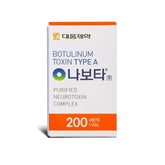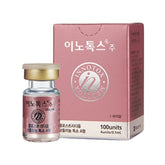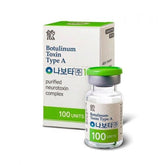Tips for Cleaning and Maintaining Your Makeup Tools

Tips for Cleaning and Maintaining Your Makeup Tools. In the world of beauty, makeup tools are the unsung heroes, often overlooked in their significance. Yet, their upkeep is as crucial as the makeup itself. Proper cleaning and maintenance of your makeup tools not only ensure the longevity of the tools but also protect your skin from bacteria that can lead to breakouts and infections. Here are professional tips for cleaning and maintaining your makeup tools, ensuring they remain in pristine condition for flawless application every time.
Tips for Cleaning and Maintaining Your Makeup Tools: Understanding the Importance
Makeup brushes and tools accumulate dead skin cells, oils, dust, and makeup residue. This buildup can become a breeding ground for bacteria, which can lead to skin irritation or worse. Regular cleaning is essential for both hygiene and performance.
The Cleaning Routine
Daily Cleaning:
For tools used frequently, such as foundation and concealer brushes, a daily quick clean is beneficial. Use a spray brush cleaner and a paper towel to remove superficial dirt and makeup after each use.
Deep Cleaning:
Once a week, your brushes deserve a deep clean. Use a gentle brush shampoo or mild soap, and warm water to thoroughly cleanse the bristles. Swirl the brush tips in the palm of your hand or on a brush cleaning mat to dislodge buildup.
Step-by-Step Guide to Deep Cleaning
- Rinse the Bristles:
Run the brush bristles under lukewarm water to rinse out residual makeup. Always keep the bristles pointing downwards to prevent water from seeping into the handle, which could weaken the glue over time.
- Apply Cleanser:
Place a drop of brush cleanser or baby shampoo in the palm of your hand. Gently massage the bristles in the cleanser to break down and remove makeup and oils.
- Rinse Thoroughly:
Rinse the brush head under running water until the water runs clear. Ensure all soap is removed, as leftover cleanser can cause skin irritation.
- Dry with Care:
Gently squeeze excess water from the bristles with a clean towel. Reshape the brush head and lay it flat to dry. Avoid standing brushes upright to dry, as water can seep into the handle.
Maintaining Other Makeup Tools
Sponges:
Makeup sponges should be washed after each use with a liquid cleanser. Squeeze them under running water until the water runs clear, then allow them to air dry.
Eyelash Curlers:
Wipe your eyelash curler with a sanitizing wipe after each use. Replace the rubber pad regularly to prevent bacteria buildup and ensure optimal performance.
Tweezers and Scissors:
Clean tweezers and scissors with rubbing alcohol after each use to keep them sanitized.
Best Practices for Tool Maintenance
Storage:
Store your clean makeup tools in a dry, ventilated area. Use brush guards to maintain their shape, and consider using a makeup organizer to keep them separated from used tools.
Avoid Sharing:
Never share makeup tools, as this can transfer bacteria and lead to infections.
Regular Inspection:
Regularly inspect your tools for wear and tear. Frayed brushes or damaged sponges can affect your makeup application and may need replacing.
Tips for Cleaning and Maintaining Your Makeup Tools: Investing in Quality Tools
Invest in high-quality brushes and tools, as they are designed to withstand regular cleaning and are often more durable. Quality tools can last for years with proper care, making them a worthwhile investment.
The Professional Approach
Consider what makeup artists do: they clean their tools after every use. While this might not be feasible for everyone, adopting a professional mindset towards tool hygiene can make a significant difference in your skin health and makeup application.
The Environmental Angle
Be mindful of the environment when choosing your cleaning products. Opt for eco-friendly, biodegradable cleansers and reusable materials for drying and wiping your tools.
Tips for Cleaning and Maintaining Your Makeup Tools: Timing Your Cleaning Sessions
Plan your cleaning sessions. Clean your tools when you know they have adequate time to dry, ideally after you've applied your makeup for the day.
The cleanliness of your makeup tools is a reflection of your commitment to your craft and your skin's health. By implementing these tips for cleaning and maintaining your makeup tools, you ensure that every stroke of makeup is not only beautiful but also beneficial to your skin. Regular maintenance extends the life of your tools and ensures the integrity of your makeup routine. Embrace these habits, and your complexion will thank you for it.





